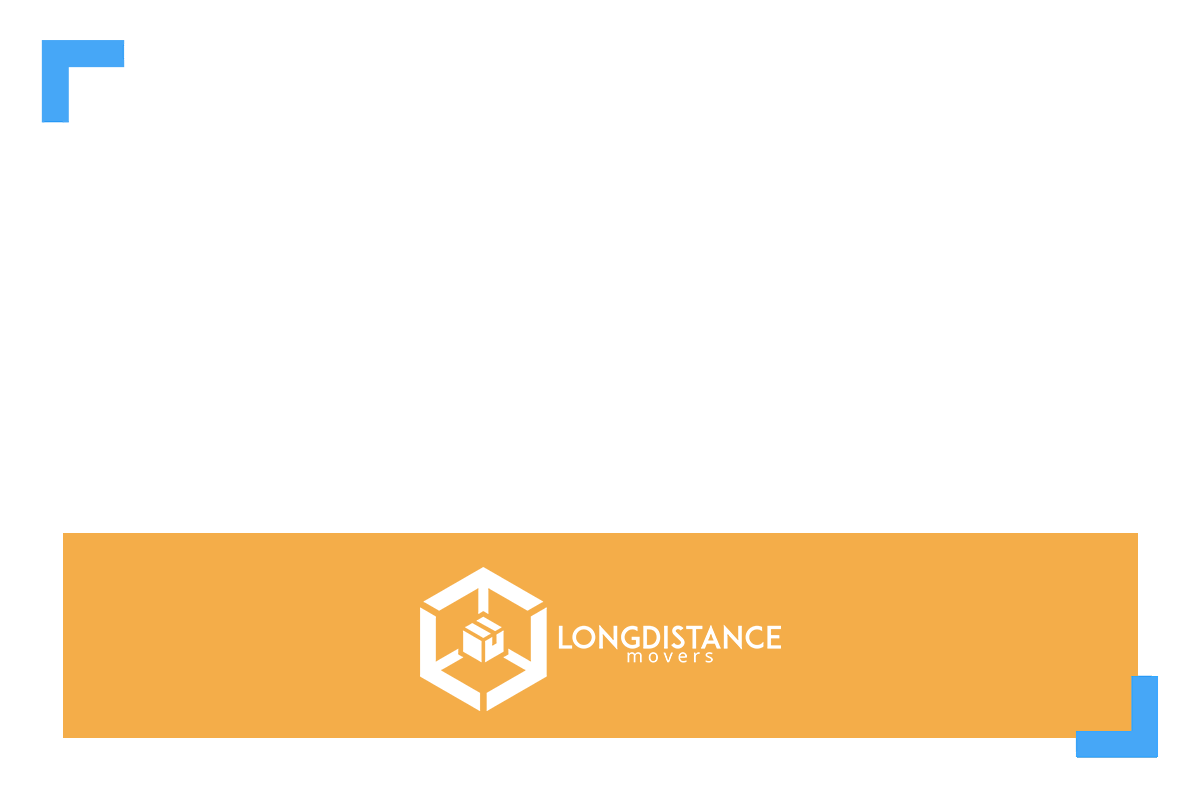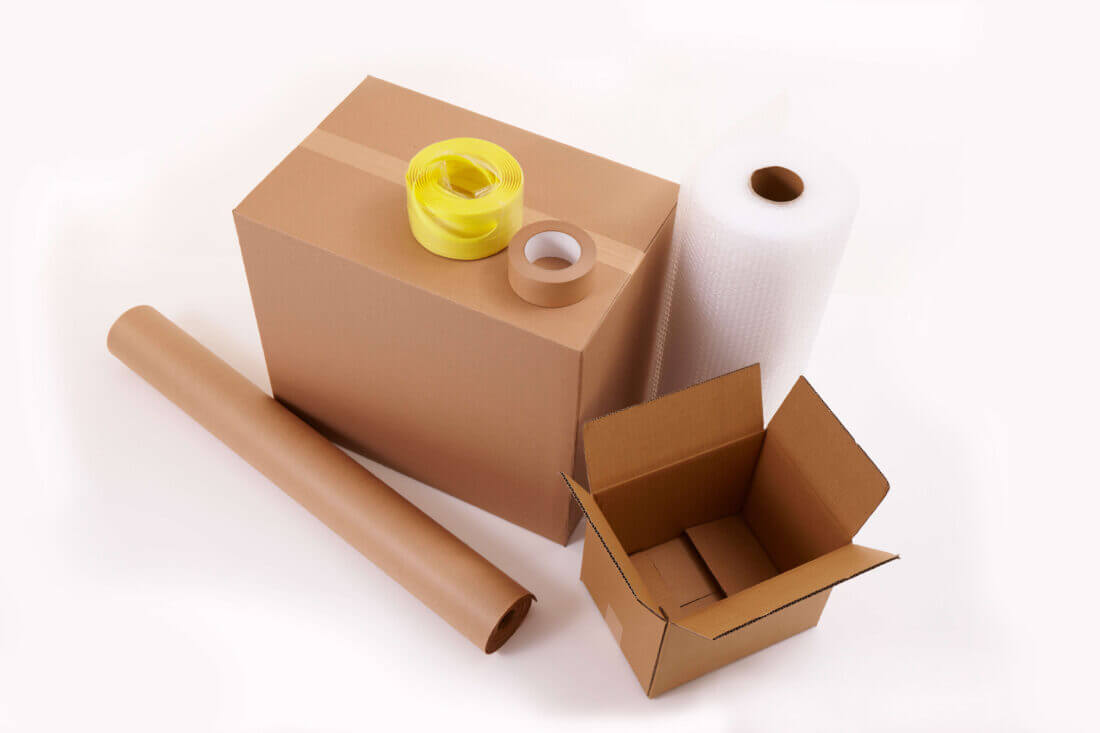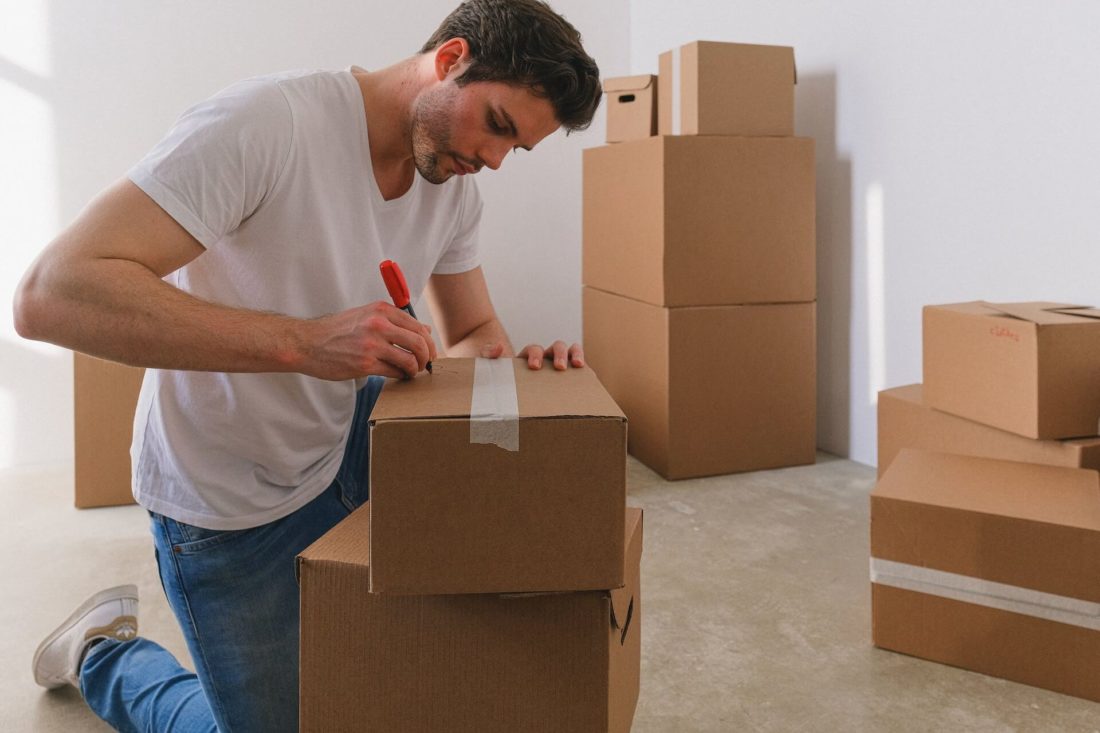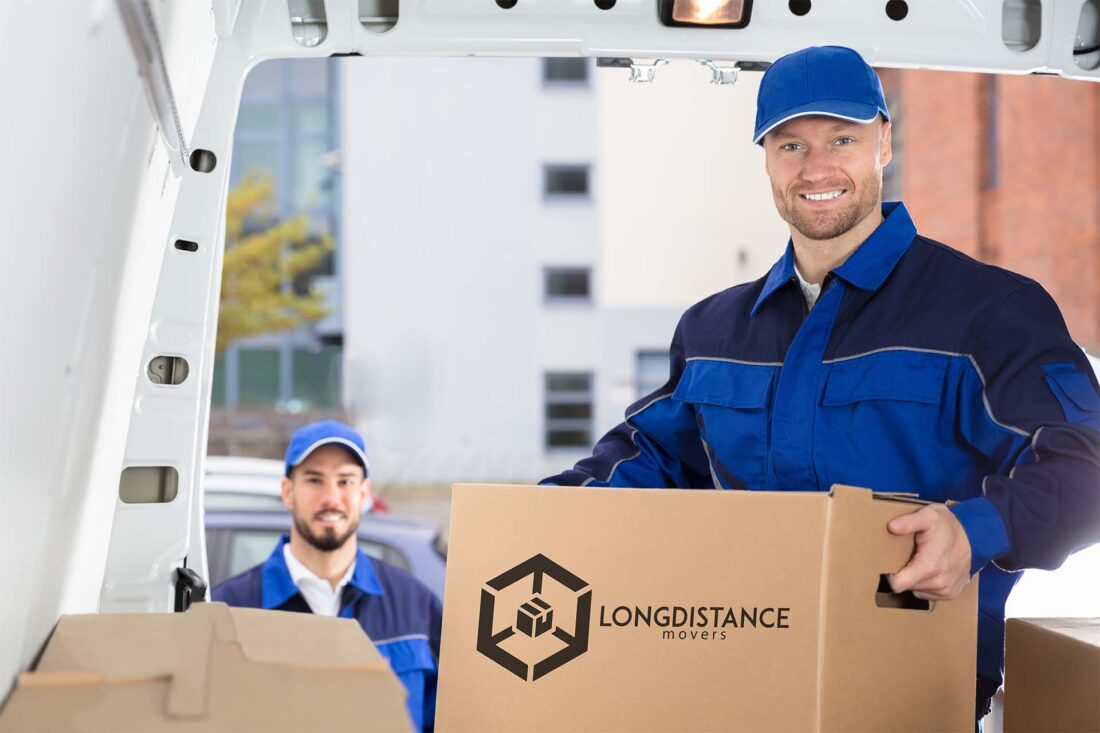Planning and getting organized to move is essential for the success of your relocation. In this comprehensive guide, we’ll walk you through each stage of the process, ensuring a smooth and stress-free transition to your new home. From decluttering and packing to hiring professionals and settling in, we’ve got you covered with expert moving organization tips and strategies for a smooth transition.


When organizing for relocation, set a final date, timeline, and relocation budget. Create a relocation checklist, downsize, gather boxing-up materials, and employ different strategies to sort everything safely for relocation. If you find thinking about every detail of this process overwhelming, hire professionals to handle your relocation.
Step 1 – Getting Organized to Move Starts With Assessing Your Needs
Before embarking on this journey, assess your specific requirements and preferences. Consider factors such as the distance of the relocation, the size and number of your belongings, your relocation budget, and any special considerations like relocating with pets or kids. This initial assessment sets the foundation for a well-organized relocation tailored to your unique circumstances.
Determine the Reasons for the Move
Understanding the reasons for your relocation is essential in the planning process. Identify the driving factors behind your decision to relocate, whether it’s a new job opportunity, a change in lifestyle, or being closer to family and friends. By knowing the motives behind your relocation, you can better align your choices and prioritize aspects like location, timing, and the type of relocation services needed for this endeavor.


Step 2 – Create a Moving Checklist
Designing a comprehensive getting ready-to-move checklist is important for keeping track of essential relocation tasks and deadlines. Considering how easy it can be to overlook something, you want to include the following key tasks in it as soon as possible:
- Set a relocation date,
- Research and hire a reputable long-distance moving company,
- Obtain packing materials, such as boxes, tape, bubble wrap, and clean paper,
- Sort through and downsize your belongings,
- Notify utilities, post office, and relevant parties about the address change,
- Schedule disconnection and connection of utilities at both locations,
- Pack non-essential items and label boxes for easy unpacking,
- Create an essentials box with necessary items,
- Organize important documents and keep them in a safe place,
- Transfer or close bank accounts, if needed,
- Arrange temporary storage solutions,
- Coordinate with your company for logistics and any special requirements,
- Finish boxing up and disassembling large objects for relocation,
- Have a final walkthrough to ensure nothing is left behind.
Utilize Digital Tools and Apps to Manage the Moving Checklist
Utilize relocation checklist apps designed specifically for this purpose, offering ready-made checklists, task reminders, and customizable features to cater to your unique requirements. Make use of note-taking apps on your smartphone or computer to create and update checklists effortlessly, ensuring accessibility and real-time updates.
Stay on track by integrating your checklist with calendar apps, enabling you to set deadlines and receive timely reminders for crucial milestones. Embrace the convenience of document scanning apps, which allow you to digitize essential paperwork like leases or contracts, providing quick access throughout the relocation process. If you’re relocating with your family, consider collaboration apps that enable multiple users to view and edit the list in real time, fostering effective teamwork for a smoother relocation.


Set a Moving Timeline
Creating a timeline and a moving organization list is crucial for an efficient relocation. Start by setting a clear relocation date and work backward, outlining specific tasks to accomplish before the relocation. Divide the timeline into weeks or months and assign tasks such as decluttering, packing, hiring movers, and notifying relevant parties of your address change.
Be realistic about the time needed for each task and build buffer days for unexpected delays. Having a planned relocation timeline will keep you on track and reduce the stress of last-minute rushes, ensuring a smoother transition to your new home.
Create a Relocation Budget
Sticking to your relocating for a first-time budget will help you stay financially organized throughout the relocation and leave you with enough money to relocate out of state. List all potential relocation expenses, including booking professionals, packing supplies, transportation, and any additional cross-country moving services.
Research multiple companies, check their legitimacy, and obtain quotes to have a realistic estimation of costs. Allocate funds for unexpected expenses and incidentals. Compare your budget with your financial situation to ensure it is feasible and adjust accordingly.


Step 3 – Declutter and Sort Your Belongings
It’s essential to downsize for the relocation and sort your belongings before you start boxing them up, ensuring a more organized and streamlined process. Begin by evaluating each item and making decisions about what to keep, donate, sell, or get rid of.
Sell unused things that are in good shape in a garage sale or on websites like Craigslist. This step helps reduce the number of things you’ll need to pack and transport, saving you money, time, and effort in the process while making packing more efficient.
Check the video below for some moving tips on how to downsize for a stress-free relocation.
Step 4 – Get and Organize Packing Supplies
To ensure a smooth and easy process, start by creating a list of the different packing materials. Identify the specific items you’ll need, such as different-sized boxes, bubble wrap, duct tape, markers, clean paper, and any other protective materials.
Next, source these supplies from local stores or online retailers, or consider borrowing from friends or family. Opt for eco-friendly and cost-effective packing solutions, such as using reusable containers or wrapping with old shirts or kitchen towels instead of bubble wrap.


Step 5 – Employ Various Efficient Packing Strategies
By employing a few practical packing strategies and techniques, you can expedite the relocation process and avoid unnecessary stress over your relocation. For starters, categorize and label items room by room to maintain organization and ease unpacking at your new home.
Maximize box space by filling them appropriately, avoiding overpacking, and preventing items from moving inside of a crate. Prioritize putting heavier items first to maintain box stability and facilitate lifting. Disassemble furniture for relocation when necessary to save space and protect larger pieces during transport.
Room-By-Room Packing
Whether it’s the kitchen, living room, bedroom, or any other area, the room-by-room method is an effective way to simplify the whole process and make your transition smoother. Start by putting away items from one room at a time, focusing on each area’s belongings before moving to the next.
This method not only helps keep things in order but also allows for easier unpacking and setting up in your new home. By tackling packing in this manner, you can stay focused, avoid confusion, and ensure that all essentials from each space are properly packed and ready for the trip.
Packing Fragile Items Securely to Prevent Damage
Begin by using appropriate materials, such as packing paper or bubble wrap, to individually wrap delicate items. Reinforce the bottom of sturdy boxes with tape for added stability. Pack items tightly and fill any gaps with crumpled paper or a sheet of bubble wrap to prevent movement during transit.
Clearly label each box containing fragile items with a “Fragile” sticker, indicating that special care is required. When loading the relocation truck, place these boxes on top of sturdier items to avoid crushing or damage in transit. For larger fragile items, consider using blankets or towels for added protection.
Labeling and Color-Coding Boxes for Easy Identification
Use clear and descriptive relocation labels to indicate the contents of each box and its designated room. Additionally, assign a specific color to each room, and mark the corresponding boxes with the same color. This color-coded system allows movers and yourself to quickly identify where each box should go in your new home, making the unpacking process a breeze.


Step 6 – Hire Professional Long-Distance Movers
When planning a relocation, enlisting long-distance moving services from professionals is a wise investment. Be sure to choose a reputable company with extensive experience in long-distance relocations. Research and read reviews to ensure their reliability and credibility.
Long Distance USA Movers have the expertise, specialized equipment, and knowledge of regulations to handle the complexities of relocation across state lines. Our assistance streamlines the whole process, providing professional packing services, safe delivery and auto transportation solutions, and timely shipping of your belongings.


Step 7 – Change the Address and Notify People About Your Relocation
As your big day approaches, it’s crucial to update your address and notify relevant parties about your upcoming relocation. Start by informing the post office, banks, credit card companies, and utilities of your new address to ensure a seamless transition of mail and services.
Additionally, alert subscriptions to magazines, newspapers, and online retailers about the address change. Notify friends, family, and important contacts of your new address to stay connected and receive mail at the right location.
Organize Important Documents While You Are at It
Begin by assembling all essential paperwork, such as identification, passports, birth certificates, financial documents, and legal records. Keep these documents in a designated relocation binder, ensuring easy access throughout the transition. Consider carrying these valuables with you during the relocation to prevent any potential loss or damage.
Moving Services
Treat yourself with a white glove long distance moving service that’s based on the inventory list and not weight. This means a price guarantee, transparent move costs and premium moving service.
Learn morePacking Service
Sit back and relax, we’ve got packing services covered. We use moving blankets, shrink wrap, bubble wrap and even custom wooden crating. Your stuff will be protected and carefully handled during the move.
Learn moreStorage Services
Our spacious climate-controlled units will protect your things until the drop-off. No need to worry about them because all items are labeled and secure, and each customer gets a dedicated unit mixup isn’t possible.
Learn moreStep 8 – Prepare for Moving Day
Conduct a final walkthrough of your current home to double-check that everything is packed and ready for the relocation. Confirm all details with your cross-country movers, including the relocation date, time, and any specific requirements or instructions. Stay organized during the whole process by keeping your checklist and important documents easily accessible.


Embrace Our Step-By-Step Guide, and You’ll Relocate Without a Fuss
Our comprehensive relocation checklist, good packing strategies, and expert tips will make your relocation a breeze. If you need professional assistance with your relocation, Long Distance USA Movers got you covered. Contact us today to experience a seamless and easy relocation process, ensuring you can focus on the excitement of starting anew in your new home. Let our professional team assist you every step of the way, making your journey a memorable and smooth transition.
FAQ
How Far in Advance Should I Start Planning for My Move?
It’s best to start planning at least 8-12 weeks ahead of your relocation. Early planning allows for ample time to organize details, hire professionals, and address any unexpected challenges.
What Factors Should I Consider When Selecting a Moving Company?
Consider the company’s reputation, experience, licensing, and insurance. Read reviews, get quotes, and ensure they offer the services you need for a successful relocation.
How Can I Estimate the Total Cost of My Relocation?
Estimate costs by considering the distance, size of your belongings, and the number of additional services you booked. Get multiple quotes from different companies for comparison.
What Packing Supplies Will I Need for My Move?
Gather sturdy boxes, clean paper, bubble wrap, foam peanuts, duct tape, labels, and a marker for an easy boxing-up process.
How Can I Declutter and Downsize Before Moving?
Sort through belongings and donate, sell, or discard items you no longer need. Downsizing reduces the number of things to relocate, making the process more manageable.
What Are Some Tips for Efficiently Packing My Belongings?
Pack room-by-room, label boxes, and disassemble furniture when possible. Use soft items to cushion delicate belongings and keep essentials accessible.
How Do I Protect Fragile Items During the Move?
Wrap fragile items individually with clean paper or bubble wrap, and use cushioning materials to secure them inside the boxes.
What Should I Include in My Moving Day Essentials Box?
Pack essential items like toiletries, clothes, chargers, important documents, and snacks in a separate box for easy access on a relocation day.
How Can I Update My Address and Notify Relevant Parties About My Relocation?
Notify the post office, utility companies, banks, and other relevant parties about your upcoming relocation and provide them with your new address. Go to the nearest Post Office and fill out a change of address form or simply update your address online. However, don’t forget to update your info with the rest of the relevant institutions.
What Should I Do if I Have to Relocate On Short Notice?
Focus on the essentials and hire professionals to expedite the process. Pack efficiently and seek assistance from friends and family if possible.
Are There Any Items That Moving Companies Won't Transport?
Moving companies may not transport hazardous materials, perishable items, pets, or sentimental valuables. Consult with your chosen relocation company for a comprehensive list of things movers won’t relocate.
How Can I Ensure the Safety of My Belongings During the Move?
Choose a reputable company with proper insurance and track your belongings during transit. Pack fragile items with care and secure boxes to prevent damage.
How Can I Prepare My Pets for the Move?
Gradually introduce your pets to carriers, maintain routines, and consider professional pet transportation if needed.
What Should I Do if I Encounter Issues or Delays During the Move?
Stay in communication with your company, document any issues, and address concerns promptly to resolve them as quickly as possible.
How Can I Handle the Emotional Aspects of Leaving My Current Home?
Allow yourself time to process emotions, say goodbye to your current home, and focus on the excitement of your new chapter.
How Can I Avoid Common Scams and Fraudulent Moving Companies?
Research multiple companies thoroughly to avoid relocation scams, read reviews, check their licenses and insurance, and avoid deals that seem too good to be true.
What Should I Do to Prepare My New Home Before Moving In?
Ensure the utilities are set up, clean the new space, and check for any necessary repairs or improvements before moving in.








